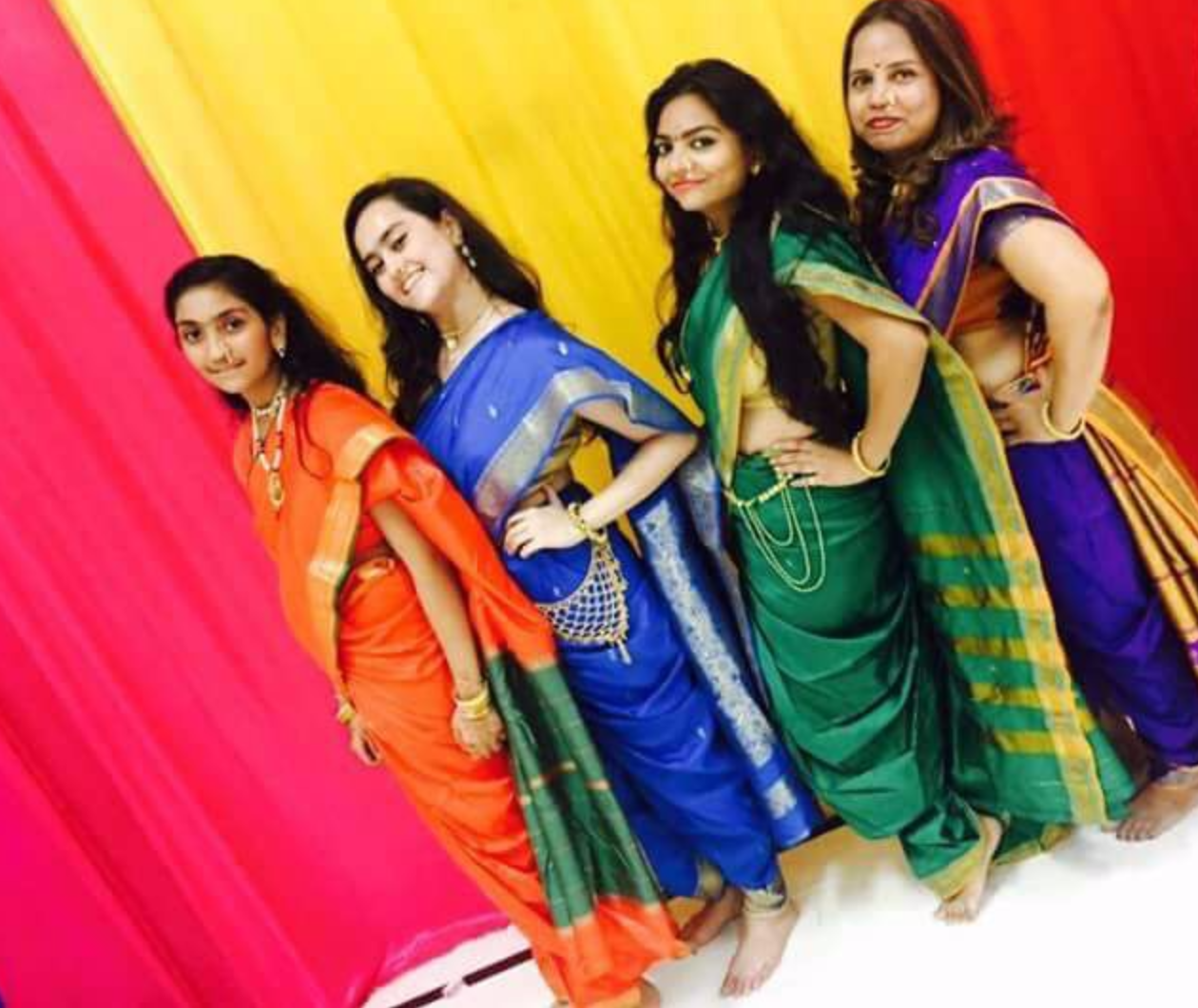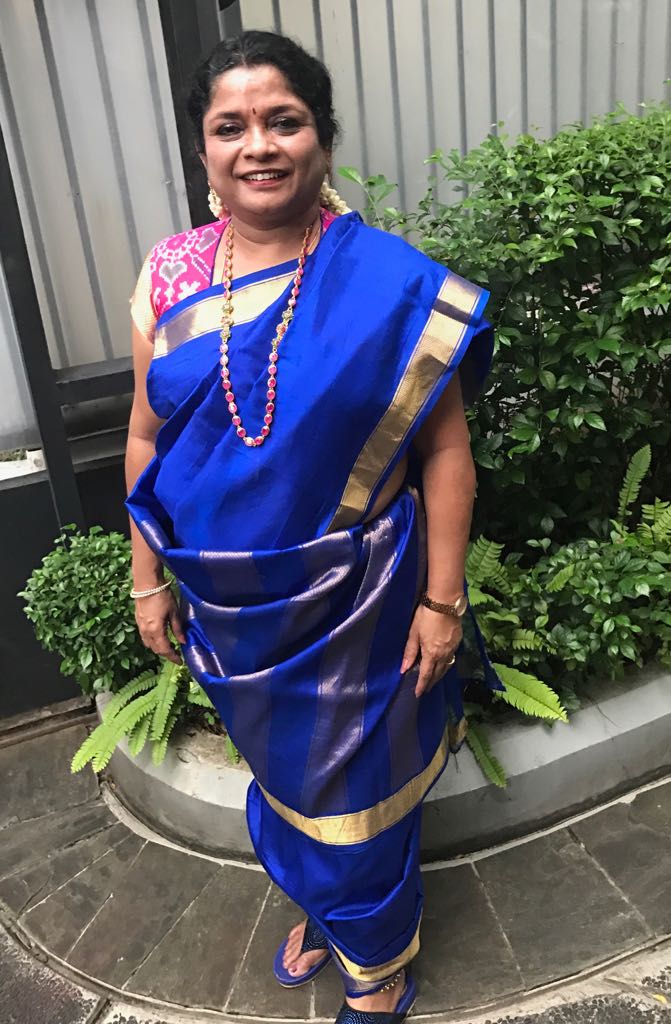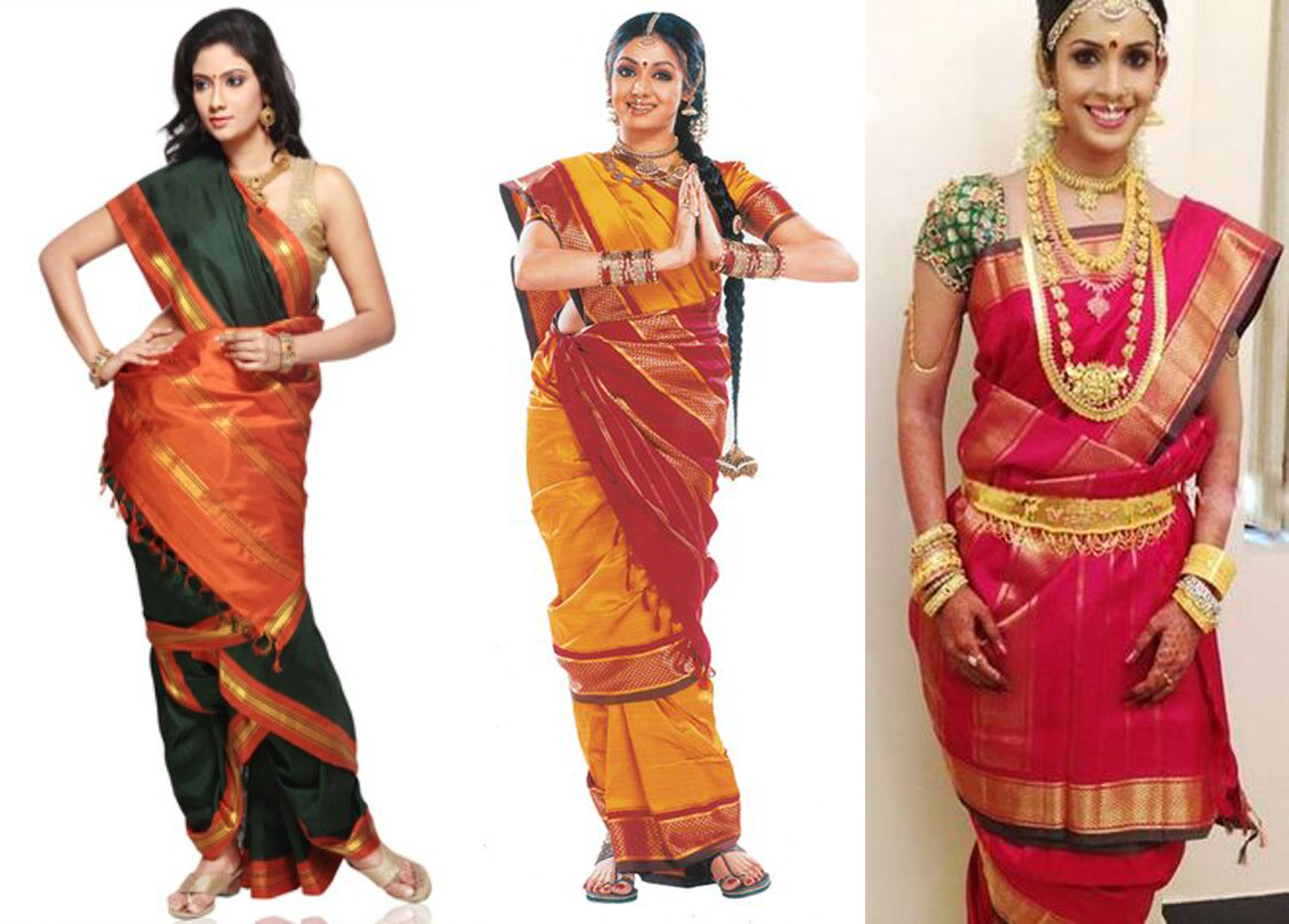Sarees are usually 6 yards long but some special drapes need 9 yard long fabric. The drape of the 9 yard saree can also vary from region to region. For instance, in Goa, this style is donned by fisherwomen who prefer a tight and well-structured drape. Amongst the Koli tribe, a two piece garment similar in looks and structure is worn.
Traditionally, the nine yard saree was an all-inclusive garment worn without a petticoat or upper garment (blouse) in south India, while in Maharashtra a blouse was sometimes worn. The centre of the saree is tucked in securely at the back, with the ends tied in the front, and then the saree is wrapped around each leg trouser style. The decorative end pieces were thrown over each shoulder and ticked in securely.
Thus, the saree completely covers the woman in a modest manner but at the same time offers an unprecedented level of comfort because of the distinctive trouser style. When draped in the traditional way, the 9 yard sari allows a lot of flexibility of movement while still looking very traditional and beautiful.
The traditional Maharastrian Nauvari (also known as Nav Vari, Nauvaree, Kasta Sari, Kacha, Sakachcha, Lugade) is a nine yards saree worn by the women of Maharashtra. The name ‘Nauvari’ originated from the saree’s length of nine yards. The style of drape for Nauvari gives a trouser-dress like an appearance, while the sari is tucked at the back. Nauvari sarees usually come in cotton and is worn without a Petticoat, majorly by the Maharashtrian Brahmin women community.

The traditional Tamil Brahmin style (Madisar Iyengar) is especially draped for ceremonial occasions and weddings. As they are reserved for special occasions, they usually come with more elaborate designs and are made of luxurious fabrics.

Did you know that there is a reason for this elaborate drape worn on auspicious occasions like weddings and poojas? These functions usually take 6 to 8 hours. If you go to the toilet you will defile yourself. According to tradition, the knots tied on the body control certain pressure points which will control your natural urges. This helps you concentrate on the pooja and you will not feel like going at all. This applies to any Brahmin style saree in India. Part of the saree is loin cloth and part of the saree is the actual saree draped over the loin.
10 steps to drape the Madisar Iyengar the 9 yard saree:
Stand with your legs about 2 ft apart
- Make 5-6 pleats (lengthwise) in one end of the saree.
- Keep these pleats on your left (at the back) and hold it above ur waist line with ur left hand
- Bring the saree around your body and make a knot at the left back in your waist line.. DONT DISTURB the Pleats .. the pleat should comfortably dangle over the knot..
- Bring it to the front and tuck one edge almost near your right edge of your hip and then again take it to the center and tuck it there
- Make the pleat (width of the saree) and bring the whole saree to the back under your legs.
- Tuck the saree at the back (waist line).
- Bring around the saree through your left after tucking the shorter edge slightly at your right.
- Bring the saree around your body again
- Pass it on to your right shoulder arranging the border.
- Bring the border around and tuck in the front.





